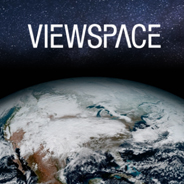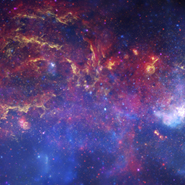Celestial Tour: "Guest Stars" in the Sky
Video Player
Video Versions
Supernovas—called “guest stars” by ancient astronomers—have fascinated humans since the dawn of time.
| Title | Time |
|---|---|
| Celestial Tour: "Guest Stars" in the Sky | 4m 15s |
Produced by the Space Telescope Science Institute’s Office of Public Outreach in collaboration with NASA’s Universe of Learning partners: Caltech/IPAC, Center for Astrophysics | Harvard & Smithsonian, and NASA Jet Propulsion Laboratory.
All images, illustrations, and videos courtesy of NASA, ESA, and STScI except:
- Milky Way over La Silla: ESO/B. Tafreshi
- Milky Way over Pyramid of the Feathered Serpent: Robert Fedez
- Night sky imagery created with Stellarium
- Supernova explosion (artist’s impression): ESA/Hubble (L. Calçada)
- First Page of The Book of the Later Han: Public Domain (Southern Song Shaoxing [1131–1162] edition)
- SNR RCW 86: X-ray: NASA/CXC/SAO & ESA; Infrared: NASA/JPL-Caltech/B. Williams (NCSU)
- SNR 1006: X-ray: NASA/CXC/Rutgers/G. Cassam-Chenai, J. Hughes et al.; Radio: NRAO/AUI/NSF/GBT/VLA/Dyer, Maddalena & Cornwell; Optical: Middlebury College/F. Winkler, NOAO/AURA/NSF/CTIO Schmidt & DSS
- Japanese record written in “Meigetsuki”: Meigetsuki, Vol 48 by Teika Fujiwara (1162–1241)
- Text from the report of SN 1006: Report of SN 1006 by Persian scholar Ibn-Sīnā in al-Shifāʾ from the Arabic edition by Madkūr et al. (1965), page 73
- Chinese report: Public Domain (Pankenier, David W. 2006. Notes on Translations of the East Asian Records Relating to the Supernova of AD 1054. *Journal of Astronomical History and Heritage* 9(1): 77–82.)
- Wide Crab Nebula: ESO / Manu Mejias
- SNR 1572: X-ray: NASA/CXC/RIKEN & GSFC/T. Sato et al; Optical: DSS
- Tycho Star Map: Public Domain (Brahe, Tychonis (1901) [A facsimile reprint of the original edition, 1573] Tychonis Brahe dani, die XXIV octobris A.D. MDCI defuncti, operum primitias De nova stella, Hauniae: [I. Ioergensen & soc. (M. A. Hannover)])
- SNR 1604: X-ray: NASA/CXC/NCSU/M.Burkey et al; Optical: DSS
- Kepler Constellation drawing: Christie’s Images, New York
- SN 2011fe in M101: BJ Fulton/LCO/PTF
- Supernova 1987A Before: ©Australian Astronomical Observatory/David Malin
- Supernova 1987A After: ©Australian Astronomical Observatory/David Malin
- Multiwavelength SN 1987A: X-ray: NASA/CXC/SAO/PSU/K. Frank et al.; Optical: NASA/STScI; Millimeter: ESO/NAOJ/NRAO/ALMA
- Wide Field image of SN 1987: NASA, ESA, and R. Kirshner (Harvard-Smithsonian Center for Astrophysics and Gordon and Betty Moore Foundation) and P. Challis (Harvard-Smithsonian Center for Astrophysics)
- Milky Way Panoramic image: ESO/S. Brunier
- Multiwavelength Milky Way: ESO/ATLASGAL consortium/NASA/GLIMPSE consortium/VVV Survey/ESA/Planck/D. Minniti/S. Guisard Acknowledgement: Ignacio Toledo, Martin Kornmesser
- Betelgeuse Wide: Adam Block, Steward Observatory, University of Arizona
- Milky Way over Atacama Desert: ESO/Y. Beletsky
Writing: Ann Jenkins
Design: Alyssa Pagan
Science review lead: Dr. Quyen Hart
Education lead: Yesenia Perez
Subject matter expert: Dr. William Patrick Blair
Music: "Light" by Borrtex CC BY-NC-SA 4.0
(SPEECH)
[MELANCHOLY MUSIC]
(DESCRIPTION)
Text, "Guest Stars" in the Sky
Since the dawn of time, we have gazed at the sky and wonder.
A pyramid. Text, Even in ancient times, humans studied and Chronicle changes in the heavens.
One such change is the appearance of a “new star,” which we now know can be a supernova.
A supernova is the cataclysmic explosion of a star.
It is one of the largest explosions that takes place in space.
As the supernova's light fades, the blast wave expands into surrounding space.
It sweeps up a shell of material called a supernova remnant, which remains visible for thousands of years.
Naked eye supernovas are rare.
Only a handful of these have been recorded throughout history.
Two examples. Text, The first known record goes back to 185 C E, when Chinese astronomers observed a “guest star” and recorded it in the book of the Later Han.
In 1006 C E, another supernova was widely observed. Its presence was noted in current-day China, Egypt, Iraq, Italy, Japan, Spain, Switzerland, Yemen, northwest Africa, and possibly also in France.
Aside from the Sun and Moon, it was likely the brightest object seen in the sky. So bright, It cast shadows at night and was even visible during the day.
Egyptian physician, astronomer, and astrologer Ali ibn Ridwan said this star was one-quarter the brightness of the Moon.
In 1054 C E, another widely observed supernova was recorded by Arab, Chinese, and Japanese astronomers
The ancient Chinese and Japanese placed a great importance on observing celestial objects.
They viewed the night sky as a reflection of society - a mirror of Earth. All changes were recorded as a way of foretelling the future.
In 1572 C E, Danish astronomer Tycho Brahe documented a "new star," from which the word "nova" is derived.
The Milky Way's last naked-eye supernova to be seen was in 1604 C E.
It was carefully documented by German astronomer Johannes Kepler, and also recorded by other European, Chinese, Korean, and Arabic astronomers.
In 1931, astronomer Fritz Zwicky was the first to use the term "super-nova," indicating a "new star" ( nova) that was so bright it could be seen in other galaxies.
In 1987, a naked-eye supernova was seen in our neighboring satellite galaxy, the Large Magellanic Cloud. This was the first naked-eye supernova since 1604.
Supernova 1987A was found within hours of detecting the explosion.
X-ray, Visible, Radio, This supernova was the first to be observed across the electromagnetic spectrum.
Astronomers are still monitoring it now, seeing changes on human timescales.
Supernova 1987A is the last naked-eye supernova to be seen...
...but we continue to watch and wonder, waiting for the next supernova in our own galaxy
New instruments ensure that the next Milky Way supernova will certainly be detected and observed in amazing detail.
One of the best candidates in the Milky Way is the wildly unstable star Betelgeuse.
Perhaps we will see this star goes supernova in our lifetimes, or perhaps it will be a spectacle for future generations to witness.



